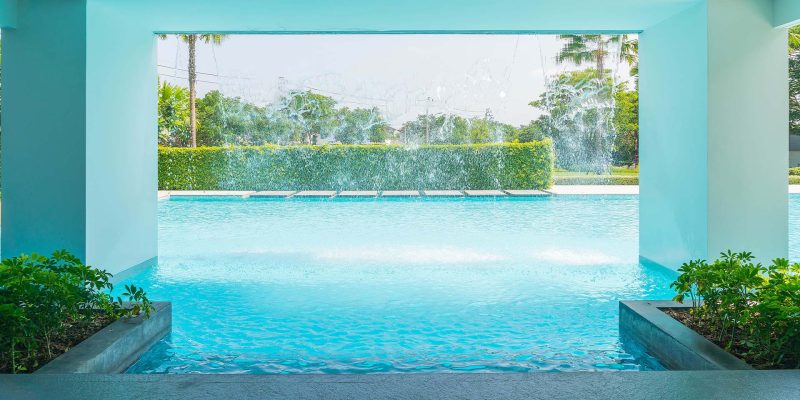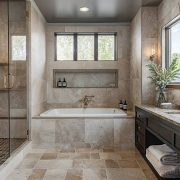Maintaining a clean pool is a straightforward task for standard rectangular pools, but unique pool shapes and features—such as curves, islands, fountains, or steps—can challenge even the best pool cleaner. Automated cleaners, whether robotic, suction-side, or pressure-side, often require customized settings to navigate irregular layouts and clean effectively. By tailoring cycle times, navigation patterns, and cleaning modes to your pool’s specific design, you can ensure thorough cleaning without missing spots or overworking the equipment. This guide provides practical strategies for optimizing your pool cleaner’s performance for unique pool shapes and features, helping you achieve crystal-clear water with minimal effort.
Understanding the Challenges of Unique Pool Shapes and Features
Unique pool designs introduce cleaning complexities:
- Irregular Shapes: Kidney-shaped, freeform, or L-shaped pools have curves, corners, or narrow sections that can trap debris or confuse cleaner navigation.
- Steps and Benches: Shallow or recessed areas are often inaccessible to cleaners, leading to debris buildup.
- Fountains and Water Features: These disrupt water flow, creating dead zones where debris settles.
- Islands or Dividers: Central features can block cleaner paths, reducing coverage.
- Slopes or Deep Ends: Steep inclines challenge traction, while deep areas may require longer cleaning cycles.
Robotic cleaners rely on sensors or programmed patterns, which may not account for complex layouts. Suction-side and pressure-side cleaners depend on water flow and hose movement, which can tangle or miss areas in non-standard pools. Customizing settings and supplementing with manual techniques ensures comprehensive cleaning.
Step 1: Assess Your Pool’s Layout and Features
Start by mapping your pool’s unique characteristics:
- Shape: Note curves, narrow sections, or sharp angles (e.g., 90-degree corners in L-shaped pools).
- Features: Identify steps, benches, fountains, or islands that may obstruct the cleaner.
- Surface Material: Vinyl liners require gentler settings to avoid damage, while concrete or tile can handle aggressive scrubbing.
- Depth and Slopes: Measure depth variations (e.g., 3–8 feet) and note steep slopes that affect traction.
- Debris Type: Determine common debris (e.g., leaves, pollen, sand) to choose appropriate filters or settings.
This assessment guides how you adjust your cleaner’s settings and where to focus manual efforts.
Step 2: Customize Cleaner Settings for Optimal Performance
Most modern pool cleaners allow adjustments to cycle times, cleaning modes, and navigation patterns. Here’s how to tailor them for unique pools:
Robotic Cleaners
- Cycle Time: For complex shapes with many corners or features, program longer cycles (2–3 hours) to ensure full coverage. For smaller or less intricate pools, shorter cycles (1–1.5 hours) suffice to avoid unnecessary wear.
- Cleaning Modes: Select modes based on your pool’s needs:
-
- Floor-Only Mode: Ideal for pools with heavy debris (e.g., leaves in autumn) or deep ends where debris settles.
- Wall and Waterline Mode: Use for pools with fountains or greasy waterlines from sunscreen, ensuring the cleaner scrubs vertical surfaces.
- Comprehensive Mode: Best for irregular shapes with multiple features, as it covers floors, walls, and waterlines.
- Navigation Patterns: If available, adjust patterns to prioritize problem areas. For example, select a zigzag or spiral pattern for freeform pools to cover curves, or a grid pattern for L-shaped pools to hit corners.
- Traction Settings: For pools with steep slopes, increase motor power (if adjustable) or ensure brushes/tires are in good condition to improve grip.
Suction-Side Cleaners
- Hose Length: Adjust the hose to match the pool’s longest dimension (e.g., 30 feet for a 25-foot pool) to prevent tangling in curves or around islands. Too-long hoses can loop and miss areas.
- Suction Flow: Set the skimmer valve to divert 60–80% of the pump’s suction to the cleaner, ensuring strong flow without starving the pool’s filtration. For complex shapes, experiment with flow settings to optimize random coverage.
- Leaf Canister: Add a fine-mesh canister for heavy debris (e.g., near fountains) to prevent clogs and improve efficiency.
Pressure-Side Cleaners
- Pressure Adjustment: Ensure the booster pump delivers 25–35 GPM, adjusting the valve to balance pressure for effective cleaning without overpowering the system. High pressure helps navigate around features like fountains.
- Debris Bag: Use a fine-mesh bag (50–100 microns) for fine debris in intricate pools or a larger-pore bag (150–200 microns) for leaves around islands.
- Sweep Tail: Adjust the sweep tail (if included) to agitate debris in corners or near steps, enhancing cleaning in hard-to-reach areas.
Tip: Consult your cleaner’s manual for specific adjustment options, as capabilities vary by model.
Step 3: Enhance Water Flow for Better Coverage
Unique pool shapes often create dead zones where water circulation is weak, causing debris to settle. To support your cleaner:
- Adjust Return Jets: Angle jets downward or toward corners, curves, or features like steps to improve water flow. For example, in a kidney-shaped pool, direct jets to push water along the inner curve.
- Run the Pump Longer: Operate the pool pump 6–8 hours daily for small pools or 8–10 hours for larger, complex pools to ensure one full water turnover, aiding cleaner movement.
- Remove Obstacles: Clear pool toys, floats, or large debris before running the cleaner to prevent navigation issues around islands or fountains.
Step 4: Supplement with Manual Cleaning
Even with optimized settings, manual cleaning is essential for areas cleaners struggle to reach:
- Skimming: Use a fine-mesh net to remove floating debris near fountains or islands daily, preventing it from sinking and clogging the cleaner.
- Brushing: Brush steps, benches, or tight corners weekly with a soft-bristled brush (for vinyl) or nylon brush (for concrete/tile) to loosen algae or dirt. Focus on areas near water features where flow is disrupted.
- Manual Vacuuming: Use a handheld battery-operated vacuum or a manual vacuum head with a hose to clean steps, corners, or seams around islands. Vacuum slowly to avoid stirring up sediment.
Example Routine:
- Daily: Skim surface debris near fountains or curves (5–10 minutes).
- 2–3 Times Weekly: Run the cleaner with customized settings (e.g., wall mode for waterlines near features). Brush steps or corners before cleaning (10–15 minutes).
- Weekly: Manually vacuum hard-to-reach areas and clean the cleaner’s filter (15–20 minutes).
Step 5: Maintain Equipment for Consistent Performance
Proper maintenance ensures your cleaner performs optimally in complex pools:
- Clean Filters: Rinse filters after each use and soak in a 1:3 vinegar-water solution monthly to remove calcium or algae buildup, maintaining suction for fine debris.
- Inspect Components: Check brushes, wheels, or hoses for wear every 4–6 weeks. Replace frayed brushes or patch hose leaks with waterproof duct tape to maintain traction and flow.
- Clear Sensors: For robotic cleaners, clean navigation sensors with compressed air monthly to prevent erratic movement in irregular shapes.
- Store Properly: Keep the cleaner in a shaded, dry area to protect against UV or moisture damage, especially if your pool has outdoor features exposed to elements.
Budget-Friendly Optimization Hacks
Keep costs low while customizing your cleaner:
- DIY Repairs: Patch hoses with heat shrink tubing ($5–$10) to avoid replacements ($50–$100).
- Reusable Filters: Use washable filters to save on replacements ($20–$50 each).
- Manual Tools: Invest in a quality skimmer net and brush ($15–$30 total) for targeted cleaning, reducing reliance on extended cleaner cycles.
Troubleshooting Common Issues
If your cleaner isn’t handling your pool’s unique features:
- Missed Areas: Adjust navigation patterns or manually clean steps/corners. Redirect jets to improve flow in dead zones.
- Clogged Filters: Use a finer filter for pollen or a larger-pore bag for leaves near fountains. Pre-skim heavy debris.
- Poor Traction: Replace worn brushes or clean wheels to improve grip on slopes or curves.
- Waterline Neglect: Enable waterline mode or manually scrub greasy areas near features like fountains.
Conclusion
Customizing your pool cleaner’s settings for unique shapes and features ensures thorough cleaning without wasting time or energy. By assessing your pool’s layout, adjusting cycle times and navigation patterns, enhancing water flow, and supplementing with manual cleaning, you can tackle the challenges of curves, steps, or fountains. Budget-friendly maintenance hacks keep your cleaner in top shape, extending its lifespan and saving costs. With these tailored strategies, your pool cleaner will navigate any design flawlessly, delivering a sparkling, inviting pool ready for enjoyment.









Comments